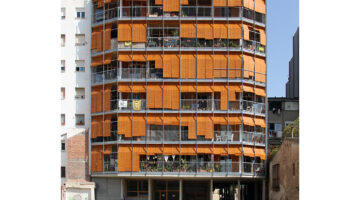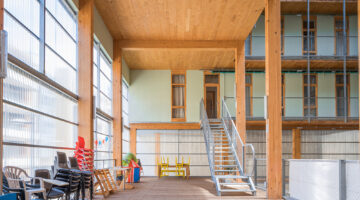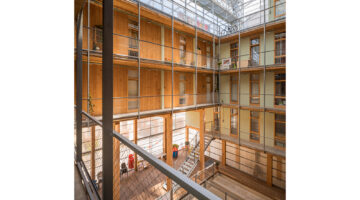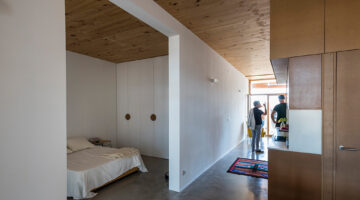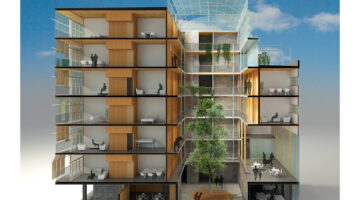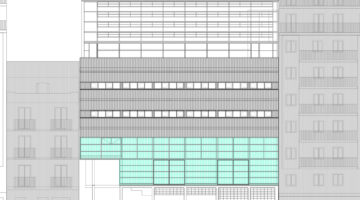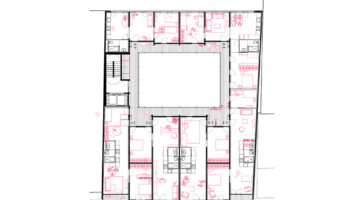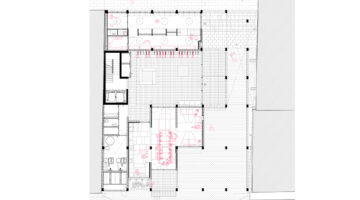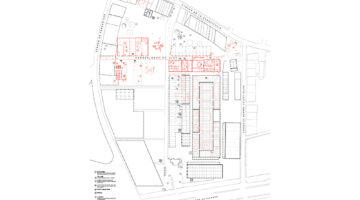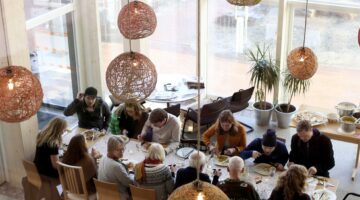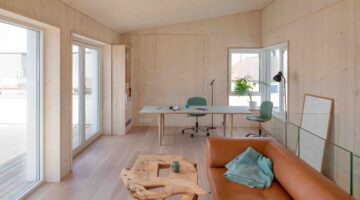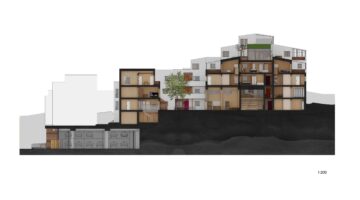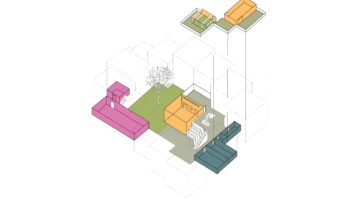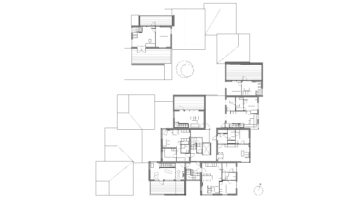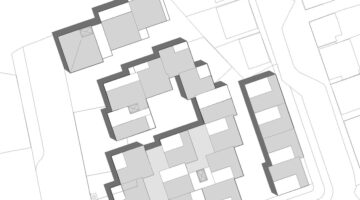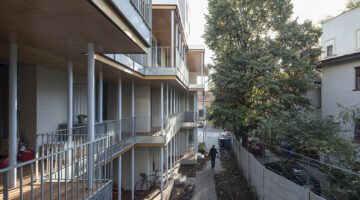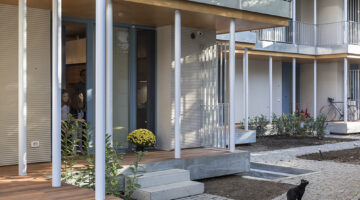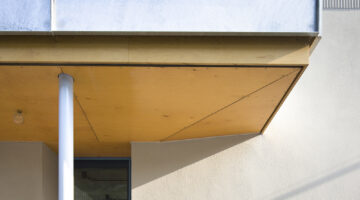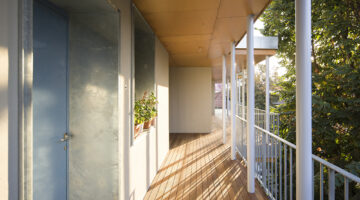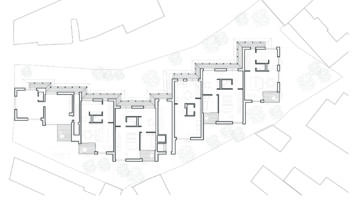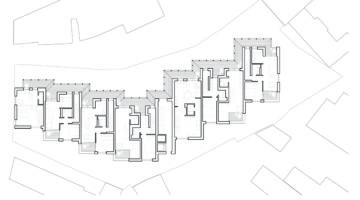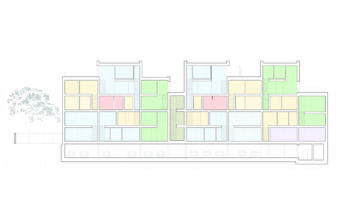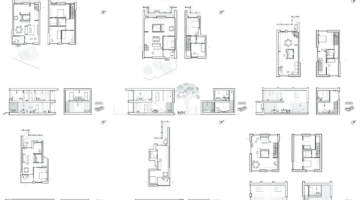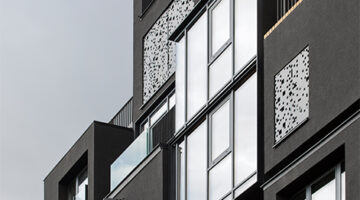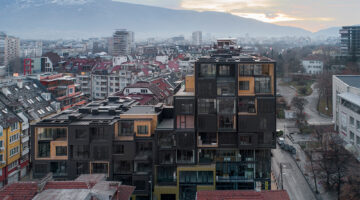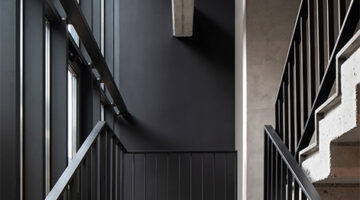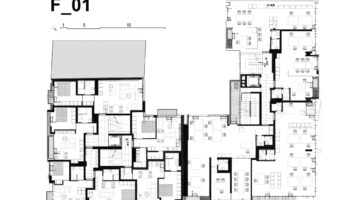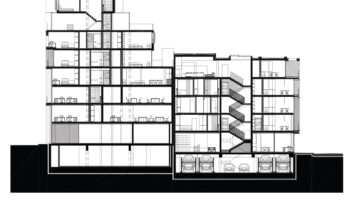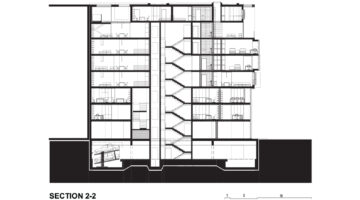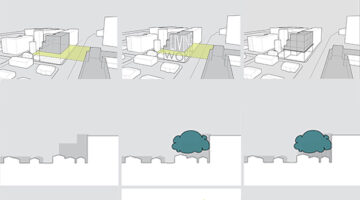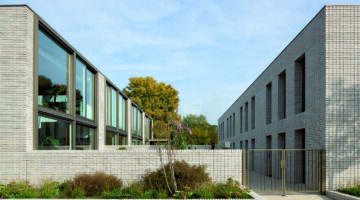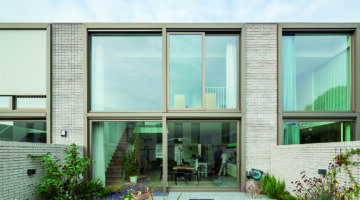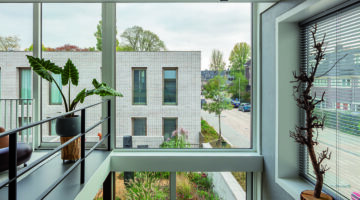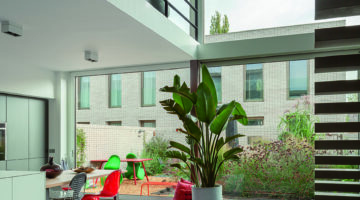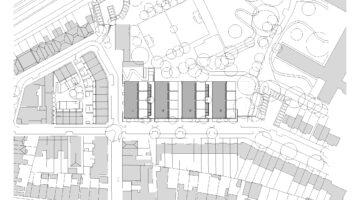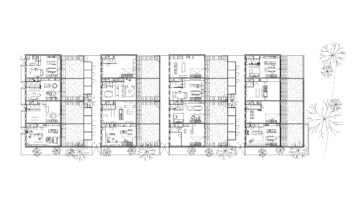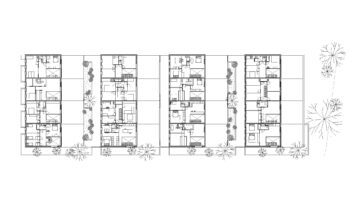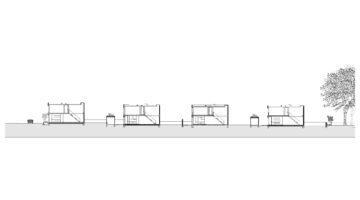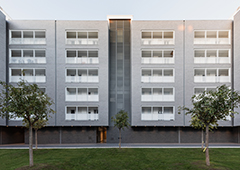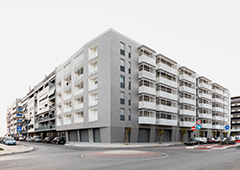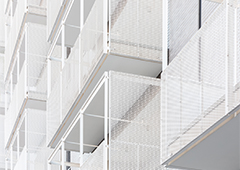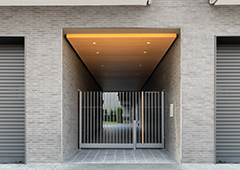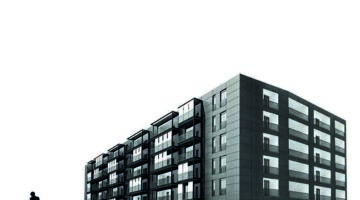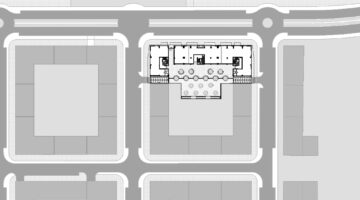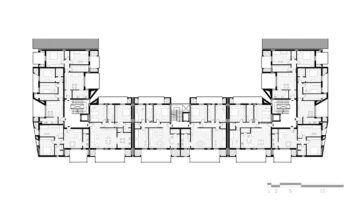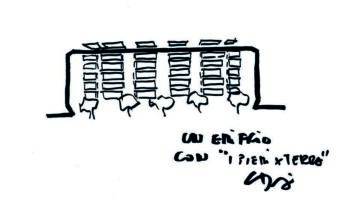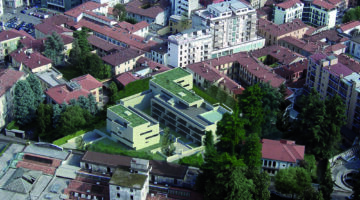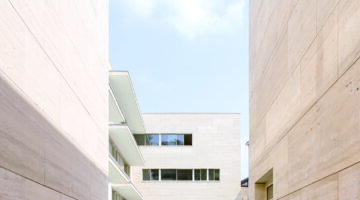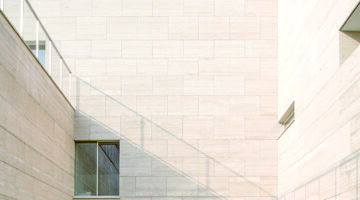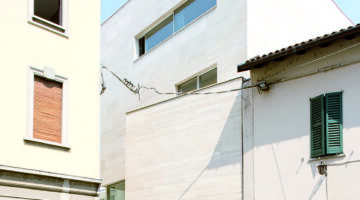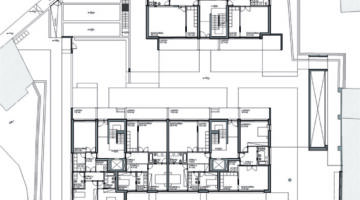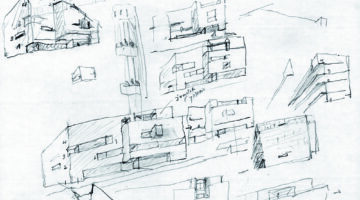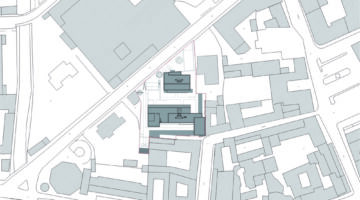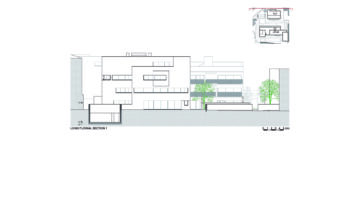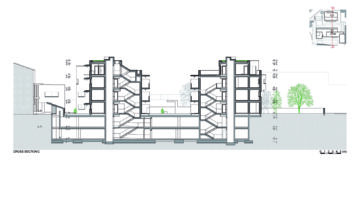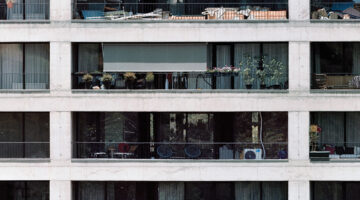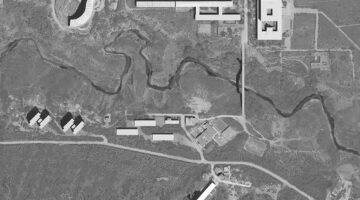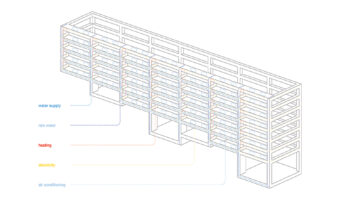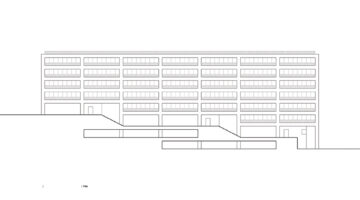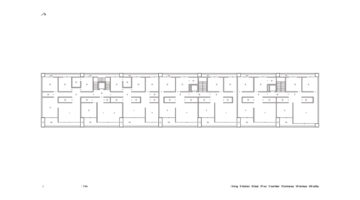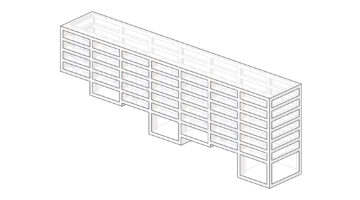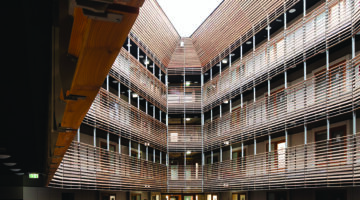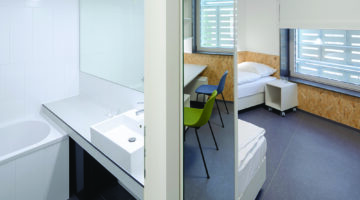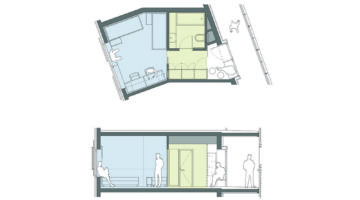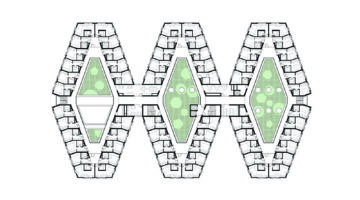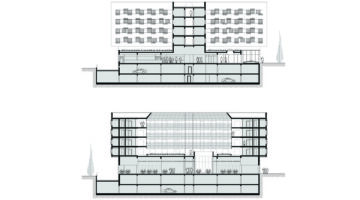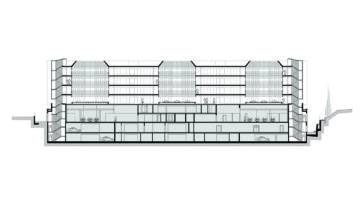


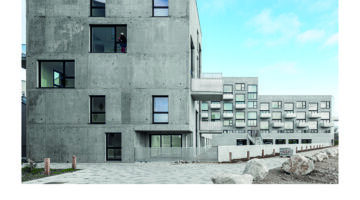
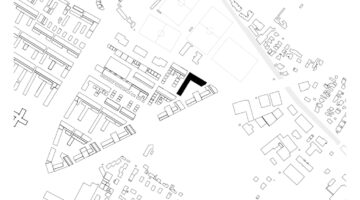


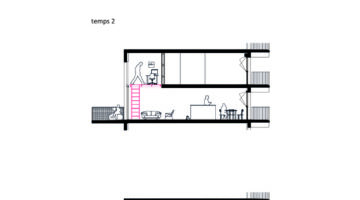

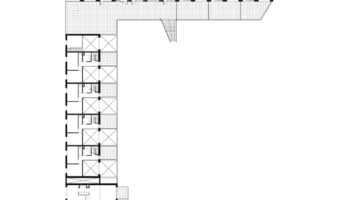

32 Cathedral Homes
Main objectives of the project
The 32 cathedral housing units complex includes 3 different dwelling typologies bringing a fresh look on density and infusing a diversity in architectural forms. The 2 variants of flats and the town-houses share a similar layout of the living areas, all featuring double exposure and a double-height portion, making possible a future densification.
Date
- 2020: Construction
Stakeholders
- Architect: Sophie Delhay
Location
Country/Region: France
Description
In a typical suburban landscape, between a national road, a residue of forest and sports fileds, on a former farmed land, the ensemble includes 3 dwelling typologies, recreating within the assigned plot the complexity of a residential neighbourhood which has grown over time. The project borders 2 sides of a triangular plot, clearing a big collective garden. 22 flats are installed in a 6 levels building. The ground floor accommodates an open car park, creating a level circulation between the street and the garden and bringing in natural light. On the 1st floor, a common space is extended by a terrace. A row of 5 houses connects the “main” building with a smaller one that hosts 5 intermediate typologies in a little tower notifying the entrance of the neighbourhood. At the top a terrace offers a 360 ° panorama and the first row to football matches which take place at the foot of the building.
Our first goal was to resists to the temptation of segregation of urban forms by implementing principles that govern 3 housing typologies until they merge into a unitary whole. The 32 dwellings are mainly distinguished by their access mode - individual for the houses, by landing serving two apartments for the intermediate typology and by outdoor passageways running along the façade for the collective housing. However, the same design guidelines apply to all. All apartments are characterized by double height and double oriented living rooms. Everywhere the same big windows are protected by xxl custom made curtains. All units, simplex or duplex, have a day and a night area and a private exterior. But all the ingenuity lies in the response to one of the sector's town planning rules: make possible the densification of the plot by 20%. Rather than amputating the garden with constructions, we suggest to create this possibility inside the existing volumes. The double-height living rooms are flexible spaces that can be upgraded over time by building a mezzanine or flooring. In tis case the “missing room” lost in the height paradoxically becomes extra space, proof that less in more.
The different typologies (collective, intermediate, individual) are assembled in a single hybrid volume that stands out by its raw concrete materiality and its large bay windows set it aluminium which give rhythm to the façade. The unity of the project is sealed by strong constructive
principles, a rigorous grid and a unitary materiality. The concrete structure and its plots are visible to all in the ground floor parking lot. To facilitate the appropriation of double-height spaces, we installed long textile curtains and oversized paper lamps, introducing suppleness that counteracts the exposed concrete of the walls and the orthonormal plan of the apartments. Moreover, we worked with our construction company on fine details, including the numbering of each apartment engraved in the concrete façade, a unit in the guardrails and an atypical staircase leading to the panoramic terrace.

